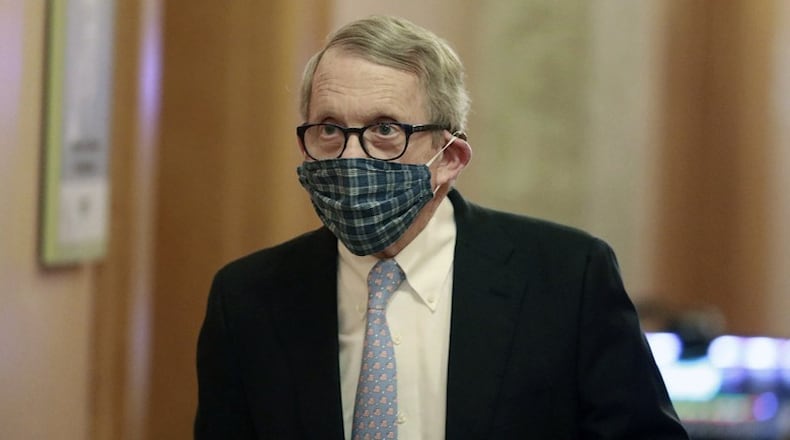The expanded mask order now covers Ohio’s most populous counties, including Cuyahoga, Franklin, Hamilton, Butler and Montgomery, as well as rural counties such as Scioto and Allen. Conditions are improving in Hamilton and Butler counties but worsening in Athens and other counties, DeWine said.
Counties designated “red” or “Level 3″ in the public health advisory system have alarming trends in at least five different metrics, such as cases per capita, new cases over the past five days, and the number of patients reporting COVID-19 symptoms to doctor’s offices and emergency rooms.
Dr. Andy Thomas of Ohio State University Wexner Medical Center said the advisory system is akin to a weather forecast that gives warning of impending storms.
More detailed information on all Red Alert Level 3 counties can be found here: https://t.co/iTj0CstiPf#InThisTogetherOhio #StaySafeOhio #MasksOnOhio pic.twitter.com/W3fnaZx1sJ
— Governor Mike DeWine (@GovMikeDeWine) July 16, 2020
“I will do whatever it takes to keep the people of Ohio safe,” DeWine said, when asked what might happen if people don’t comply and numbers continue to worsen.
DeWine said he is still asking Ohioans to wear masks — even in counties that aren’t under high-level warnings — but he hasn’t ruled out a statewide mask order. “We may come to that. We may make a decision that the entire state will be under a mask order,” he said.
Masks continue to be a flash point in the coronavirus crisis: those who refuse, those who comply; those who argue for individual liberty, those who argue for collective responsibility. Public health experts recommend face coverings to help prevent the spread of the airborne virus, as well as social distancing, frequent and thorough hand washing and disinfection of high-touch surfaces.
Hundreds of thousands of college students and 1.8 million K-12 students are expected to return to classes beginning in about four weeks.
“The next few weeks are going to tell the tale, frankly. We’re talking about K through 12, we’re talking about college. We all want kids back in school. What we do today — literally today, tomorrow, the next day — is going to determine whether that occurs or whether that does not occur. And it’s not going to take an order from Mike DeWine,” DeWine said. If trend lines continue, parents won’t want to send their students back to class or campus, he said.
The Ohio Department of Health on Thursday reported 70,601 confirmed and probable cases, including 1,290 new cases from the previous 24 hours; 3,103 confirmed and probable deaths since the start of the pandemic; and 9,324 cumulative hospitalizations, including 115 in the previous 24 hours.
The Ohio Department of Job and Family Services on Thursday reported that just over 35,400 Ohioans filed new jobless claims last week. Over the past 17 weeks, 1.5 million workers have filed for unemployment benefits.
DeWine said Thursday he hasn’t decided whether he’ll attend the Republican National Convention in Florida next month. He is a delegate for President Trump.
Montgomery County remains a Level 3 alert because of its high new cases per capita, its increase in new cases, its high level of cases outside congregated settings like nursing homes and prisons, and its climbing outpatient and emergency visits for COVID-19. Warning levels are updated every Thursday.
In the new report released Thursday on why Montgomery County is a level 3, Ohio Department of Health stated that during the past three weeks, Montgomery County’s COVID-19 cases have increased and Montgomery County has reported 680 cases during the past 14 days, which means the county continues to be categorized as “high incidence” for COVID-19, as defined by the CDC.
Cases increased from an average of 48 new cases per day on June 23 to 60 new cases per day on July 12.
The community continues to see signs that people are seeking medical care for COVID-19 symptoms. From June 23 to July 14, visits for COVID-19 to a local emergency department increased from an average of 12 per day to 18. More people in Montgomery County are also visiting their doctors and being diagnosed with COVID-19. From June 23 to July 12, local outpatient visits more than doubled from an average of 32 visits per day to 76.
More than 77% of the cases in the county are not in congregate settings like nursing homes and prisons. This is an indication of broad spread of the virus in the community and the need for community-wide measures.
Recent outbreaks include workplaces, child care and long-term care facilities, the report stated.
About the Author

